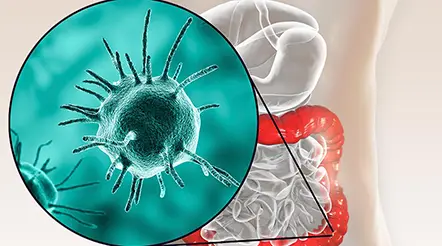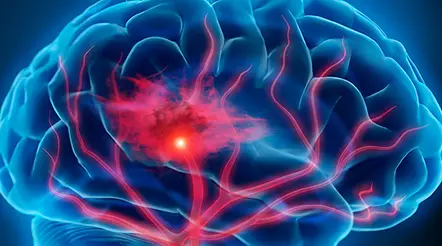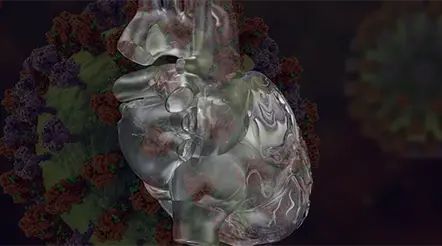


Introduction
Ann Kimball and John W. Johnson Center for Cellular Therapeutics at Houston Methodist
Houston Methodist Dr. Mary and Ron Neal Cancer Center
The Food & Health Alliance within the Houston Methodist Lynda K. and David M. Underwood Center for Digestive Disorders, Immunology Center and the Fondren Inflammation Collaborative
Houston Methodist Cockrell Center for Advanced Therapeutics
Paula and Joseph C. “Rusty” Walter III
Translational Research Initiative
Jerold B. Katz Academy of Translational Research
Infectious Diseases Research Fund
George and Angelina Kostas Research Center for Cardiovascular Medicine
New Endowed Chairs Positions
EnMed
Center for Bioenergetics
result
Clinical Research
Outcomes, Quality and Healthcare Performances
Restorative Medicine
Precision Medicine
Science in Service
of
Medicineresult
President's letter
2022 Metrics
Cycle of Translation
Visionary Gifts of Hope


Introduction

Ann Kimball and John W. Johnson Center for Cellular Therapeutics at Houston Methodist

Houston Methodist Dr. Mary and Ron Neal Cancer Center

The Food & Health Alliance within the Houston Methodist Lynda K. and David M. Underwood Center for Digestive Disorders, Immunology Center and the Fondren Inflammation Collaborative

Houston Methodist Cockrell Center for Advanced Therapeutics

Paula and Joseph C. “Rusty” Walter III Translational Research Initiative

Jerold B. Katz Academy of Translational Research

Infectious Diseases Research Fund

George and Angelina Kostas Research Center for Cardiovascular Medicine

New Endowed Chairs Positions

EnMed

Center for Bioenergetics

From Discovery to Clinic


What is "Discovery to Clinic"?

Clinical Research


Houston Methodist Conducts First-Ever Study into a Challenging Situation

Can Regulating Cellular Aging Mitigate Both Cancer and Heart Disease?

Innovative Treatment for Chronic Rhinitis is Safe and Effective


Masters of Disguise: Glioblastomas Trick the Immune System by Masquerading as Reproductive Tissue
Improved Options for Patients with Severe Retinal Vascular Disease

A New FDA-Approved Treatment for Sufferers of Chronic Constipation

Houston Methodist joins the Gulf Coast Consortia

Outcomes, Quality and Healthcare Performance


New Findings on RNA Helicases May Yield New Intestinal Disease Therapy

Houston Methodist and Pennsylvania State University Collaborate on a Smartphone App That Could Revolutionize Stroke Diagnosis

New Frontiers to Improve Cardiovascular Medicine and Disease Management

Ongoing Lessons in a Pandemic

Transplants can Boost Survival Rate of Patients with Unresectable Liver Cancers

Telehealth Video Visits During the COVID-19 Pandemic – a Glimpse into the Future?

SARS-CoV-2 Induced Chronic Oxidative Stress and Endothelial Cell Inflammation May Increase Likelihood of Cardiovascular Diseases and Respiratory Failure

Restorative Medicine


Lessening Pain After Knee Replacement Surgery

Do Motor Neurons First Die in the Brain? Study Provides Clues about ALS Origins

Bringing Back Hand Function in People with Complete Spinal Cord Injury

Novel Vascular Engineering Platforms Are a Boon for Bioengineering

Ultra-high-Resolution Scanner Reveals if Knee Injury Advances to Osteoarthritis

Houston Methodist Model Demonstrates Reversal from Heart Failure State, Creating the Potential for Innovative Treatment Avenues

Precision Medicine


Rapidly Scalable, All-Inducible Neural Organoids Could Facilitate Drug Screening for Neurological Diseases

Importance of the Coronary Artery Calcium Score in Risk Assessment and Prevention of Atherosclerotic Cardiovascular Disease

COVID-19 Infection in Crucial Brain Regions May Lead To Accelerated Brain Aging

Interleukin 9 Secreting Polarized T Cells Show Potential in Solid and Liquid Tumor Treatment

The NanoLymph: Implantable. Adaptable. Anti-cancer





Discovery to Clinic
SARS-CoV-2 Induced Chronic Oxidative Stress
Outcomes, Quality and Healthcare Performance

SARS-CoV-2 Induced Inflammation May Increase Cardiovascular Diseases and Respiratory Failure

A research team led by Nhat-Tu Le, PhD, Associate Professor of Cardiovascular Sciences, investigated how the COVID-19 virus might contribute to cardiovascular complications in patients suffering from COVID-19 as well as recovering patients. Le suggested that the severe acute respiratory syndrome coronavirus 2 (SARS-CoV-2) infection might induce chronic oxidative stress and endothelial activation resulting in several long-term complications.
Although the endothelium contains only a single layer of endothelial cells, it plays critical roles in regulating blood fluidity, vascular tone, platelet aggregation, inflammation and angiogenesis. Endothelial dysfunction leads to disease states where endothelial homeostasis is affected, causing chronic inflammation, diabetes, lung injury, thrombosis, atherosclerotic plaque formation and rupture and other cardiovascular complications.
The coronavirus (COVID-19) disease, which was declared a pandemic by the World Health Organization (WHO), has caused millions of deaths globally. According to a January 2022 WHO report, the SARS-CoV-2 virus has accounted for more than 5.5 million deaths globally and over 318 million confirmed cases. Endothelial cells play critical roles in SARS-CoV-2 infection. Although COVID-19 symptoms range from none (asymptomatic) to death, severe cases lead to disease states such as acute respiratory distress syndrome (ARDS), lung injury, thrombosis, and cardiovascular disease, which are consequences of mitochondrial oxidative stress in endothelial cells and inflammation. Further, patients exhibit cardiovascular complications even after recovering from COVID-19.
A knowledge gap exists in the field regarding the mechanisms underlying the long-term disease processes associated with SARS-CoV-2 infection. Another area of study that requires greater in-depth investigation is mitochondrial dysfunction in endothelial cells. Mitochondrial dysfunction plays significant roles in COVID-19 disease states. Endothelial cells infected with SARS-CoV-2 show cell death, inflammation, activation, and dysfunction, which are thought to result from the inflammatory “cytokine storm.” Reactive oxygen species (free radicals) released by mitochondria in endothelial cells can trigger inflammatory signaling pathways, subsequently promoting endothelial activation and dysfunction, and are capable of physically damaging cellular DNA, proteins and lipids.
In a review published in Frontiers in Physiology in 2021, Le introduced the hypothesis that SARS-CoV-2 triggers a positive feedback loop promoting a chronic state of inflammation and endothelial activation through inducing mitochondrial dysfunction and oxidative stress. This review details how chronic oxidative stress and SARS-CoV-2-induced inflammation in endothelial cells may increase the likelihood of cardiovascular diseases and respiratory failure.
Under physiological conditions, endothelial cells maintain homeostasis and mediate the transfer of solutes and macromolecules between the blood and tissue. When threatened by infection or injury, endothelial cells trigger inflammatory responses by secreting inflammatory cytokines and engaging immune cells. Indeed, endothelial cells are important in inflammatory pathologies such as ARDS, thrombosis and atherosclerosis.
In endothelial cells, excess mitochondrial reactive oxygen species trigger mitochondrial dysfunction, inflammation and senescence, which may be activated by SARS-CoV2 infection of endothelial cells. The state of senescence (aging at the cellular level), in turn, promotes inflammation and chronic endothelial dysfunction. Evidence in the literature points towards critical functions of endothelial cells and inflammation in COVID-19 pathologies. For instance, autopsies of deceased patients in the Mount Sinai Hospital in New York revealed disease states such as thrombosis, hyperinflammation and endothelial dysfunction.
The signaling pathways associated with COVID-19 pathologies can be targeted to develop novel therapeutics. Specifically, potential therapeutics can target the SARS-CoV-2-induced feedback loops in endothelial cells involving oxidative stress and inflammation. Acute and long-term effects of SARS-CoV-2 infection can be alleviated by selective targeting of endothelial cell senescence, anti-inflammatory therapies and antioxidant therapies.
“To prevent a future outbreak of pulmonary and cardiovascular mortalities among recovered COVID-19 patients, it is essential to investigate SARS-CoV-2’s potential role in chronic oxidative stress and inflammation in endothelial cells. Interesting observations of SARS-CoV-2’s interactions with endothelial cells will uncover previously unknown mechanisms of endothelial cells and their role in pathogenesis of inflammatory syndromes observed in other diseases. These understandings will be crucial to mitigate and treat several infectious diseases of the present and as we step into the uncharted post-COVID era,” said Le.
As the COVID-19 pandemic continues to affect the global population, there is a concomitant increase in the number of recovering and infected patients across all age groups. This underscores the importance of investigating and understanding the long-term health effects of COVID-19, including long-term oxidative stress, inflammation and long-term damage to endothelial cells.














